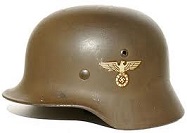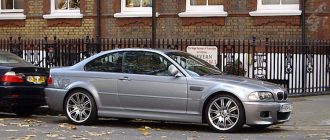Interested in German army helmets? Read ahead to discover more about the different styles of German helmets from the World Wars…
German helmets are extremely important for present day driving and military purposes. It is quite interesting to see that the designs from World War I and World War II still survive and are available in mainstream retail outlets.
Something like the German helmet for motorbikes is today used by different bikers across the world. The German motorcycle helmet was used in everyday military forays during World War II. Following this there was a development in motorcycle accessories and more protective helmets were available in the market for motorbike enthusiasts. However, the quintessential German motorcycle helmet is still popular for many reasons.
Description of a German Motorcycle Helmet
It basically looks like a tortoiseshell on top of your head, but is extremely comfortable and has different types of finishing which include chrome, shiny black, and pink for women. It even comes with the shiny fiber base with flat black flames for a decorated effect. These helmets have a chin strap on both sides and the goggle strap at the back. It is also possible to get ear covers to protect yourself in the cold weather. The inside of the helmet is lined with the soft material. Interestingly enough the helmet can also be finished with leather on top for a very snazzy and decorated look.
The helmets today are also certified so it is possible to wear them on the road while you drive the motorcycle. These can be accompanied by goggles because you need protection for your eyes as the helmet does not have a screen for protecting the face. Nonetheless they look very smart and offer the right kind of protection when coupled with the right goggles for the long ride or for daily use on a short commute.
World War II German Helmets
Other German helmets include the Luftwaffe paratrooper helmet which is quite well-known till today. Hailing back from the days of World War I and World War II, these helmets were worn by paratroopers as they assailed into enemy territory. Perhaps another commonly remembered helmet is that worn by the Gestapo police which was the Nazis secret police.
The combat helmets are also unique in that these helmets often had a mesh wire on top to offer protection. This could also be used for extreme camouflage on top of the helmets when used in the battlefield.
After World War II many German helmets were also converted to utility equipment. A helmet like the M. 1942 is on display in the National Liberation Museum in Groesbeek. After being reengineered in a factory with three prongs on its base to support it as a stand, and many holes drilled across its surface, the helmet functions as a colander to wash vegetables.
The German relic helmets are today acquired from different sources such as sites of previous German battlefields. Much of these are in areas like Poland, Latvia, Czechoslovakia and Russia where treasure hunters have agents and resources to acquire relic helmets. These are dug out from trenches, battlefronts and even from graves. While there is a lot of denial when it comes to grave robbing, sources have seen mass graves being dug out and robbed of different paraphernalia from World War II and German battlefields.




